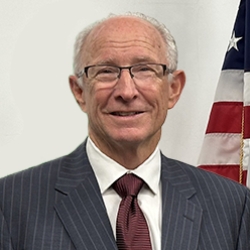The Assessor’s duty, set forth by statute, is to establish a market value for all of the county's taxable real and personal property.
Our mission is to assess property in Wasatch County professionally and efficiently to ensure taxing entities levy property taxes equitably and to communicate those assessments with taxpayers productively. We want to help you navigate your property taxes and understand our role and processes.
What We Do:
County assessment begins with the daunting task of assessing every property at 100% fair market value. This market-assessed value is determined using some or all of three possible methods: sales evaluation, cost method, and income method. These methods evaluate a property based on sales of comparable properties, what it might cost to replace the property, and the income the property can produce. Assessors use sales data to analyze market trends and regularly update existing assessments to keep current with market values. Because the market is a moving target, assessments are made on each property’s value as of Jan 1st of each year. Assessors also identify new buildings and developments each year, commonly called “new growth,” so they can be counted separately. Once all updates and new assessments are completed, they’re added to the Assessment Roll. Values are then adjusted for any exemptions, and the assessment roll is given to the County Clerk/Auditor so they can calculate the Certified Tax Rate. The County Auditor also hears property valuation appeals with the Board of Equalization.
How It’s Used:
Utah’s Truth in Taxation system uses assessed values to keep property tax fair. Each tax entity sets the revenues it will need from property taxes in its budget process. This figure is then divided by the total value of all property taxed to produce a uniform Certified Tax Rate. Because revenues are set politically, and the rate results from a calculation, assessed values keep taxes fair in two ways. First, they provide the means for a summed number to create a uniform tax rate. Second, they offer an individual number, the assessed value, to which the rate is applied. Hence, each property owner pays their portion of the property tax levy according to the relative value of their property each year. This transition from specific values to summed values and back again adds complexity, but it improves fairness.
All the “new growth” identified by assessors is put aside until after the tax rate is calculated. New developments can bring new costs for tax entities, and they can increase their revenues proportionally with new growth without holding public hearings on Truth in Taxation. These new growth properties are then taxed at the Certified Tax Rate. When the time comes to calculate a new rate in the following year, the necessary revenue (numerator) and the total assessed value (denominator) have accounted for the new growth. If all other factors remained the same, each property owner’s payment wouldn’t change. Of course other factors do change, but this method means existing owners don’t have to pay to extend existing services to new growth; and that’s one more way the Assessor keeps Utah’s tax system fair.

